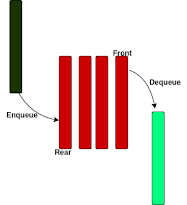Priority Queue
A priority queue is an abstract data structure and it is similar to the regular queue . Each element in the priority queue has a priority associated with it. In the priority queue, we dequeue the highest priority element before the lowest priority and if the priority is the same then as per the insertion order it will dequeue. One of the best real-time applications, CPU Scheduling is basically done the same thing. If the higher priority task occurs then it interrupts the ongoing process and shares the resources to the higher priority. We have taken the example of RabbitMq in the queue blog . In RabbitMq, we push elements in the queue and wait until the subscriber subscribes to the messages. Suppose, If there are n messages that are pending to subscribe and one of the messages needs to be processed as soon as possible. If we have pushed the message by setting the high priority in the queue then it will process first then rest of them. Some of the languages implement the priority queue ...

